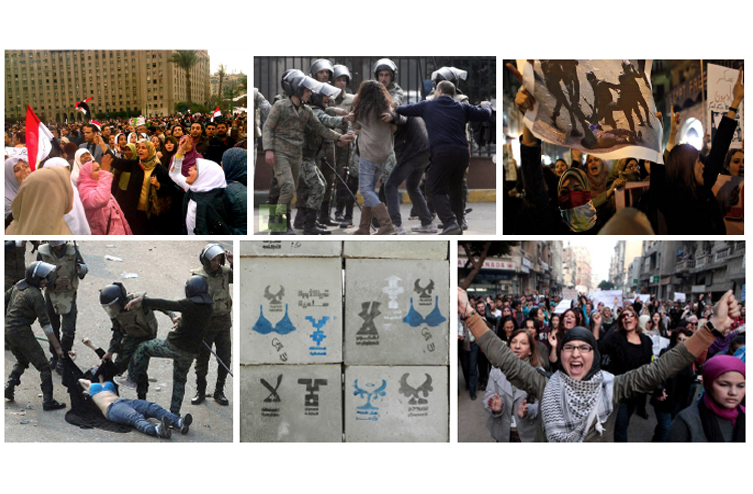Aerial photo of Tahrir Square with community organized and managed zones identified, including KFC Clinic, Toilets, Flag Sellers, and Campsite. Source: BBC.com.
BACKGROUND & APPROACH
At the beginning of 2011, burgeoning digital discontent emerged through the physical and political occupation of Tahrir Square by Cairo’s activists and youth. While the initial events leading to the ouster of Former President Hosni Mubarak lasted eighteen days, from 25 January to 11 February, the conflict continues through the present day. Within this research, the lens is cast around the first year of the struggle for democracy, 2011. Throughout this time period many spheres of public space were utilized to allow for confrontation of socio-political ideas and principles, sometimes amongst adversaries, but more often between polarized factions.
From the beginnings of the occupation of Tahrir Square through the fall of the Mubarak Regime to the inauguration of the Supreme Council of Armed Forces (SCAF), Egypt underwent vast shifts in public opinion and social discourse, as explained through the series of stakeholder diagrams on the following page. This dynamic and contentious atmosphere led to confusion and disorder within the public realm. How do these shifts relate to the notions of publicity and privacy within these contemporary, newly democratic societies? How is engagement within the public discourse facilitated and understood as intrinsically common? As well, within this practice, who is included and excluded from participating?
Collage of images from news media coverage of women protestors during the 2011 Arab Spring Egyptian Revolution. Source: Google News Search.
Of great significance to this discourse is the struggle of one particular subset: highly targeted, politically engaged, and commonly marginalized young women within public space. Widely accepted cultural practices of harassment toward and even violence against women run rampant throughout the public domain of Cairo, often limiting their ability to participate within the public space of Egyptian politics. How can a society claim democratic practices when differences cannot be confronted and the overall culture is not committed to collective, agonistic existence?
Screen shot from HarassMap showing reported incidents from Jan - Dec 2011. Source: HarassMap.org.


